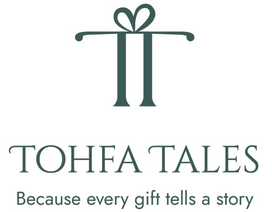Holi, often referred to as the Festival of Colors, is a time of joy, celebration, and connection. While its roots are in Hindu tradition, Holi has grown to be much more than just a religious festival. It’s a beautiful reminder that happiness and togetherness can transcend religious, cultural, and social divides, bringing people together from all walks of life. From throwing colorful powders in the air to dancing in the streets, Holi’s spirit of unity touches everyone, regardless of background.
1. Unity in Diversity
Holi brings together people from diverse backgrounds, regardless of their religion, caste, or ethnicity. While it is a Hindu festival at its core, its exuberance and spirit are universal. People of all faiths—Muslims, Christians, Sikhs, Buddhists, and others—join in the celebrations, transcending religious lines. The act of throwing colors, dancing, singing, and sharing sweets fosters an atmosphere where the distinctions that normally divide people seem to vanish.
This inclusivity encourages a sense of collective joy and mutual respect. At a Holi gathering, you might find people of different faiths dancing and laughing together, as the joy of the festival becomes a shared experience rather than something defined by specific beliefs.
2. Breaking Social Barriers
Holi has long been a festival that encourages social equality. Traditionally, it has allowed people from all social classes to come together. Historically, the festival was a time when the rigid social hierarchy of the caste system could be momentarily set aside. People would meet in the streets, play with colors, and socialize regardless of their status. The carefree, playful nature of the festival helps erase the barriers that society often builds—creating a more egalitarian environment, even if just for a day.
3. Celebrating Friendship and Forgiveness
One of the key aspects of Holi is its emphasis on the renewal of relationships. People use the festival as an opportunity to forgive past misunderstandings and conflicts. During Holi, it’s common to reach out to friends, family members, and even neighbors with whom there may have been tension or distance, offering forgiveness and renewing bonds. The colors symbolize a fresh start, free from the stains of old grudges.
This idea of reconciliation and healing through celebration is particularly powerful in building a sense of togetherness. It’s a reminder that love, friendship, and mutual respect should always outweigh divisions.
4. Global Reach and Cultural Exchange
Holi has gained immense popularity outside of India and is now celebrated in various parts of the world, with public events in countries like the United States, the United Kingdom, Canada, and beyond. These international celebrations are often a blend of cultural exchange, where people of different nationalities, races, and backgrounds come together to experience the joy of Holi.
This global spread has made Holi not only a festival for Indians but a universal celebration of life, renewal, and togetherness. In cities worldwide, you’ll find people from all walks of life joining in the revelry—whether they are of Indian origin or not—marking Holi as a truly global festival of inclusion.
5. A Day of Liberation
On the day of Holi, many of the usual societal rules and formalities are relaxed. People shed their inhibitions, dress in white clothes (which will soon be doused in vibrant hues), and celebrate with complete abandon. The playful and liberating nature of the day fosters an environment where people can come together in their shared humanity. The exchange of colors becomes symbolic of shedding old layers—be they prejudices, misunderstandings, or even personal limitations. The unity felt during Holi is a reminder that, at its core, humanity is more similar than it is different.
6. Embracing the Spirit of Joy
Ultimately, Holi is a celebration of joy—an energy that invites everyone to join in, regardless of their background. Whether it’s the innocent laughter of children, the rhythmic beats of traditional music, or the shared meals and sweets, Holi brings joy to everyone, regardless of who they are. The festival reminds us that happiness is contagious and can bring people closer in unexpected ways.
Conclusion:
Holi is a celebration that unites us all, regardless of where we come from or what we believe. It’s a reminder that, at the end of the day, we are all connected by our shared humanity. The joy, laughter, and vibrant colors of Holi create a space where differences don’t matter, and togetherness reigns. In a world that can sometimes feel divided, Holi offers us a moment to celebrate unity, love, and the beauty of coming together.
